Kitchen Traditions: Tomato Season Meets a Family Legacy
http://decor-ideas.org 09/14/2013 17:40 Decor Ideas
September is a special month in my household. It’s tomato season, and thus a time to celebrate my family’s Sicilian heritage. My kitchen is marked during the entire month with telltale signs of all the tomato sauce and pasta making: tomato-streaked cabinets and flour-dappled floors.

It all began eight years ago when my father started growing tomatoes in the backyard. His yield was so prolific, we didn’t know how to consume it all. “We should make Nona’s tomato sauce!” he exclaimed. The sparkle in his eye made me understand how much he loved his grandmother’s sauce, on which he was practically weaned.

Nona, as her grandchildren and great-grandchildren called her, came to Ellis Island from the Old Country in 1920. She, with only the company of my toddler grandfather, made her way out to California to meet up with my great-grandfather, who had already found them a home. (This photo is of my great-grandmother and grandfather in Sicily before they set off to America.)
She was a young mother in a new world. To acclimate, she drew upon her honed skills of gardening and cooking. One of the first orders of business was to start a garden in her backyard.
Long after my great-grandfather died, and my grandfather and his younger brothers moved out, Nona continued her faithful stewardship of that garden, in which tomatoes played a prominent role.
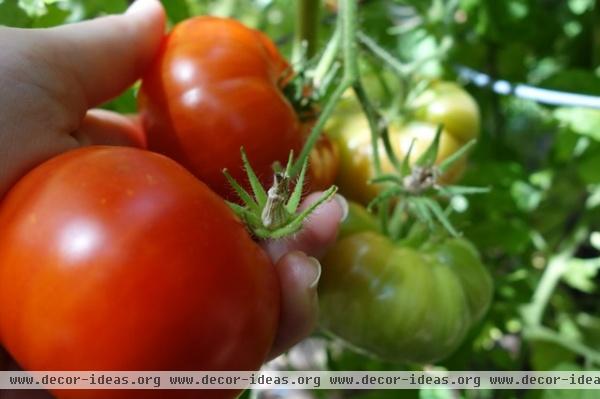
I took in the joyful look in my father’s eyes as he remembered that sauce. “But," I said, "I thought that recipe died with her.” And indeed it had, but that didn’t stop me from making my own variation, even if I’d never made tomato sauce before.
After collecting and carting home more tomatoes than our mishmash of baskets could properly contain, I set out to experiment. My husband and I had just completed construction on our brand-new kitchen, and this was to be its first big test. I put our carefully crafted design through its paces; every granite surface was susceptible to my scientist-like madness.
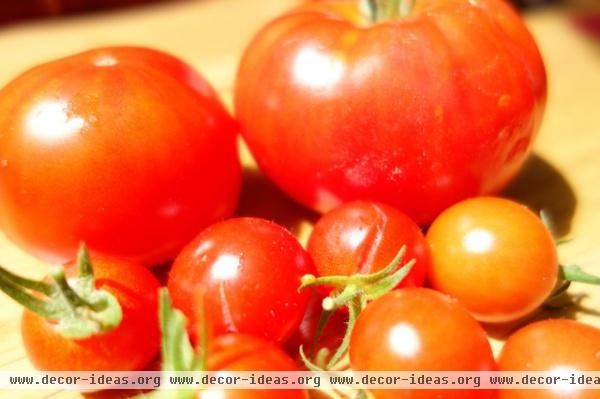
The entire sink area was dedicated to de-stemming. On the opposite wall, two of our barely initiated six burners were committed to tomato blanching. The stovetop’s adjacent countertop now seemed smaller than it had the day before, as receptacles full of fresh or blanched tomatoes competed for space.
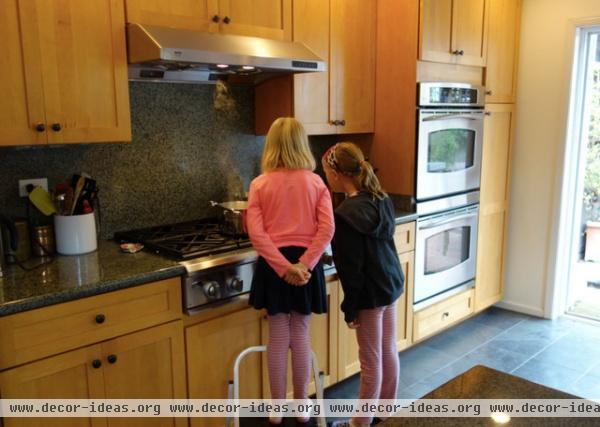
Today my all-American kids enjoy learning and participating in the family's cherished Sicilian tradition.
Another burner, on the opposite end of the stovetop, held the largest pot I could borrow. In it a generous, unmeasured helping of olive oil, garlic and onions simmered. Meanwhile I haphazardly tossed about peeled tomato skins in yet another bowl before the beautiful fruit made its way into its final phase, where it would boil longer than any of the cookbooks had prepared me for.
Truthfully, I wasn’t interested in what those books had to say. Though I wished for Nona’s recipe, it was liberating to not hold my sauce to such a high standard. Instead, I opened up the pantry and began to add the seasonings freehand.
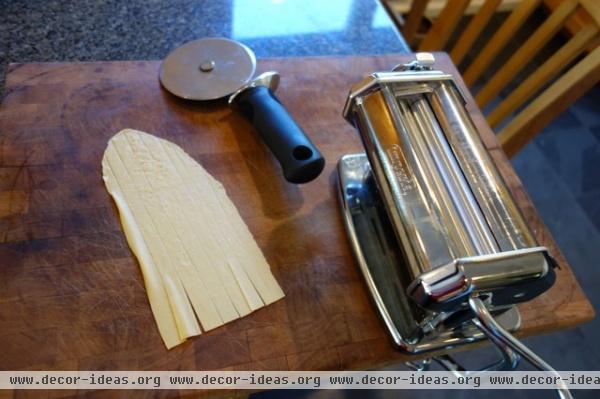
A pizza cutter makes an ideal freestyle (my preferred method) cutting device for pasta dough.
As the sauce did its thing, I moved over to the breakfast bar, the last clean spot in the kitchen, to try out my equally untested pasta-making abilities. Eggs mixed with a pinch of salt were poured into my flour well. This is what I saw in magazines. I couldn’t really do this without getting egg everywhere, could I?
Somehow it worked, and minutes later I had a dough ball.
I pulled out the old pasta maker my mother-in-law had passed down to me. As basic as the small piece of equipment seemed, it was not intuitive to my modern-day sensibilities. I tried securing it to the countertop’s bullnose edge, but the screw attachment kept slipping, right along with my patience. I realized it was best to attach the contraption to the wooden cutting board. Success!
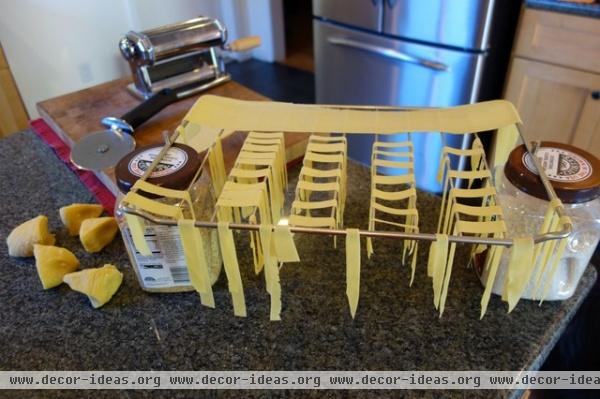
I cut the dough wheel into eight triangles, each of which was passed through the machine six times, from the widest to the thinnest setting. I cut the resulting lasagna-like strips into fettuccine- to pappardelle-like widths, then draped them over a cookie rack to dry. Like snowflakes, no two strips of pasta are ever the same when I'm making them.
I surveyed the kitchen, a sizable space that I had managed to completely overtake. Nona’s kitchen was probably half the size, yet her lifelong skills afforded her much greater efficiency. That would come with time and experience, I assured myself.
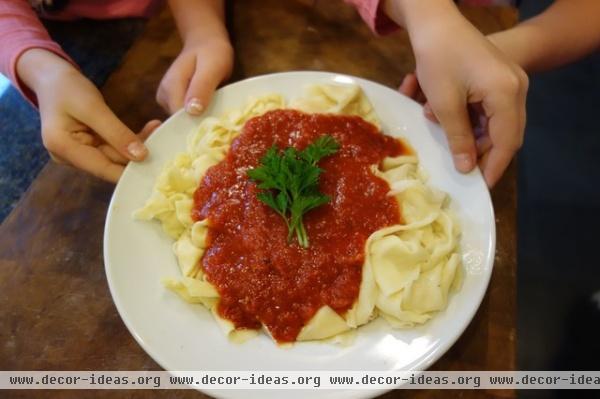
The completed sauce was delicious atop the fresh pasta. It was as if Nona herself had quietly guided me. My family sat at the counter, pushing bowls, flour and tomato skins out of the way for a chance to try it. “It’s just like Nona’s,” my father assured me, kindly.
Not likely, but I was very pleased with the results, in no small part because they involved my children’s participation and celebration of their heritage. They will never have an opportunity to meet their great-great-grandmother, but they can engage in — and eventually pass on — this important tradition, even if they follow it once only a year, like their mother.
More:
Zones Replace the Kitchen Work Triangle
How to Grow Tomatoes
Related Articles Recommended












